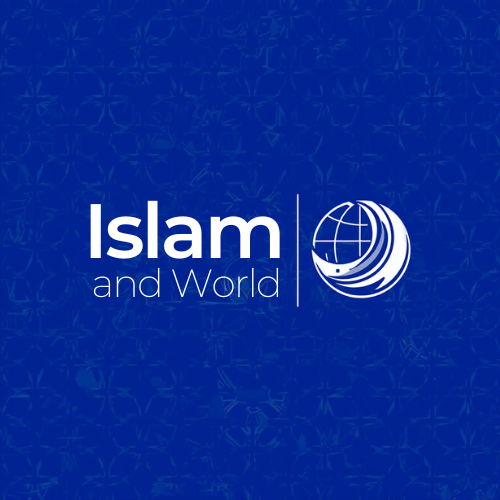A fragile calm has settled over parts of the Middle East as a series of ceasefire agreements have taken hold in several of the region’s most protracted conflicts. While the international community has largely welcomed these developments, questions remain about their long-term viability and the prospects for lasting peace. The most prominent of these truces is a recently brokered deal between Israel and Hamas, alongside separate cessations of hostilities in Yemen and Syria.
A Glimmer of Hope in Gaza
After extended and intensive mediation efforts by the United States, Qatar, Egypt, and Turkey, a phased ceasefire agreement between Israel and Hamas has been initiated, bringing a pause to a devastating conflict. The initial phase of the deal includes a halt in fighting, the exchange of Israeli hostages for Palestinian prisoners, and the withdrawal of Israeli troops to a pre-determined line within Gaza.
The announcement has been met with a mixture of relief and cautious optimism. For civilians in Gaza, it marks a desperately needed respite from the violence and the promise of increased humanitarian aid to a region facing a severe humanitarian crisis. In Israel, the primary focus has been on the safe return of hostages.
World leaders have expressed their support for the agreement, emphasizing the need for both parties to adhere to its terms and work towards a more permanent resolution. However, significant challenges lie ahead. The later phases of the peace plan, which are yet to be fully negotiated, will need to address contentious issues such as the disarmament of Hamas and the future governance of Gaza.
Uneasy Truces in Yemen and Syria
Beyond the Israeli-Palestinian conflict, other parts of the Middle East are also experiencing a fragile detBeyond the Israeli-Palestinian conflict, different regions of the Middle East are also experiencing a tenuous peace. In Yemen, a ceasefire between the United States and the Houthi movement has been in effect since May 2025. This agreement primarily focuses on stopping Houthi attacks on U.S. vessels in the Red Sea. However, the situation remains unstable, as the Houthis continue to target ships that are not affiliated with the U.S. and maintain a hostile stance towards Israel. In Yemen, a ceasefire between the United States and the Houthis movement has been in effect since May 2025. This agreement has primarily focused on ending Houthi attacks on U.S. vessels in the Red Sea. However, the situation remains volatile, with the Houthis continuing to target ships not affiliated with the U.S. and maintaining a hostile stance towards Israel.11
Meanwhile, in Syria, a comprehensive ceasefire was agreed upon in October 2025 between the Syrian government and the Syrian Democratic Forces (SDF). This truce followed intense clashes in Aleppo and aims to stabilize the northern regions of the country. The success of this agreement is contingent on the implementation of a broader political framework that addresses the complex and long-standing issues at the heart of the Syrian conflict.
The Path Forward
While these ceasefires offer a crucial opportunity to de-escalate violence and alleviate civilian suffering, the road to sustainable peace in the Middle East remains fraught with obstacles. The long-term success of these agreements will depend on the political will of all parties involved, the sustained engagement of international mediators, and the ability to address the root causes of these deep-seated conflicts. The coming weeks and months will be a critical test of whether these fragile truces can transform into lasting peace.
A Powerful Earthquake Hit Afghanistan
A powerful and shallow earthquake has struck eastern Afghanistan, causing widespread devastation and a significant loss of life. The 6.0 magnitude quake, which hit near the border with Pakistan, has resulted in thousands of casualties, with the death toll expected to rise as rescue efforts continue.
The earthquake’s epicentre was located in Kunar province, a mountainous region where many homes are constructed from mud and stone, making them particularly vulnerable to seismic activity. Numerous villages have been completely destroyed, and rescue operations are being hampered by the remote terrain and damage to infrastructure.
The initial quake was followed by a series of aftershocks, further terrifying residents and complicating the work of first responders. Local authorities and international aid agencies have been mobiliseThe initial earthquake was followed by a series of aftershocks, which further terrified residents and complicated the efforts of first responders. Local authorities and international aid agencies have mobilized to provide emergency assistance, including medical supplies, food, and shelter. However, the scale of the disaster is immense, raising concerns about the capacity to reach all those in need, particularly in more isolated areas. to provide emergency assistance, including medical supplies, food, and shelter. However, the scale of the disaster is immense, and there are concerns about the capacity to reach all those in need, especially in the more isolated areas.
This latest earthquake adds another layer of hardship to a nation already grappling with a severe humanitarian crisis. Afghanistan is prone to seismic activity, particularly in the Hindu Kush mountain range, and this event underscores the urgent need for improved infrastructure and disaster preparedness in the region. The international community is being called upon to provide support for the immediate relief efforts and long-term rebuilding process.The recent earthquake has compounded the struggles of a nation already ensnared in a deep humanitarian crisis. Afghanistan, particularly vulnerable to seismic activity in the Hindu Kush mountain range, faces a critical moment that starkly reveals the pressing need for enhanced infrastructure and robust disaster preparedness. This devastating event calls upon the international community to rally together, offering not only immediate relief but also committing to a long-term rebuilding effort that can truly transform lives and restore hope.
Thousands Gathers around the world for Gaza
Hundreds of thousands of people have gathered in cities across the globe in a massive display of solidarity with Gaza, demanding an immediate and permanent ceasefire and an end to the ongoing violence. The widespread demonstrations have seen enormous crowds in major European capitals, as well as in cities across the Middle East, Asia, and the Americas.
In Europe, cities such as London, Amsterdam, Rome, and Barcelona have seen some of the largest turnouts for protests, with hundreds of thousands of participants marching through the streets. Demonstrators have carried Palestinian flags and placards with messages like “Free Palestine,” “Stop the Genocide,” and “The Bloodshed Must Stop.” These demonstrations have been diverse, attracting people from all walks of life, including families, students, and veteran activists. In Europe, cities like London, Amsterdam, Rome, and Barcelona have witnessed some of the largest turnouts, with hundreds of thousands of participants marching through the streets. Protesters have been carrying Palestinian flags and placards with messages such as “Free Palestine,” “Stop the Genocide,” and “The bloodshed must stop.” The demonstrations have been diverse, drawing people from all walks of life, including families, students, and veteran activists.
A major catalyst for many of the recent protests has been the interception of the “Global Sumud Flotilla,” an aid convoy trying to reach Gaza. This event has sparked international outrage and fuelled demands for an end to the blockade of the territory. Additionally, the second anniversary of the October 7th attacks has served as a focal point for many gatherings, with demonstrators using this occasion to emphasize the devastating human cost of the conflict. A significant catalyst for many of the recent protests has been the interception of the “Global Summed Flotilla,” an aid convoy attempting to reach Gaza. This event has sparked international outrage and fuelled calls for an end to the blockade of the territory. The second anniversary of the October 7th attacks has also been a focal point for many of the gatherings, with demonstrators using the occasion to highlight the devastating human cost of the conflict.
In addition to the massive street marches, the protests have also included vigils and calls for political action, such as sanctions and an end to arms sales to Israel. Organisers, including the Palestine Solidarity Campaign and Amnesty International, have emphasised the growing global demand for a peaceful resolution and justice for the Palestinian people. The sustained and growing nature of these international demonstrations signals a significant and unwavering global call for peace and humanitarian aid for Gaza.

